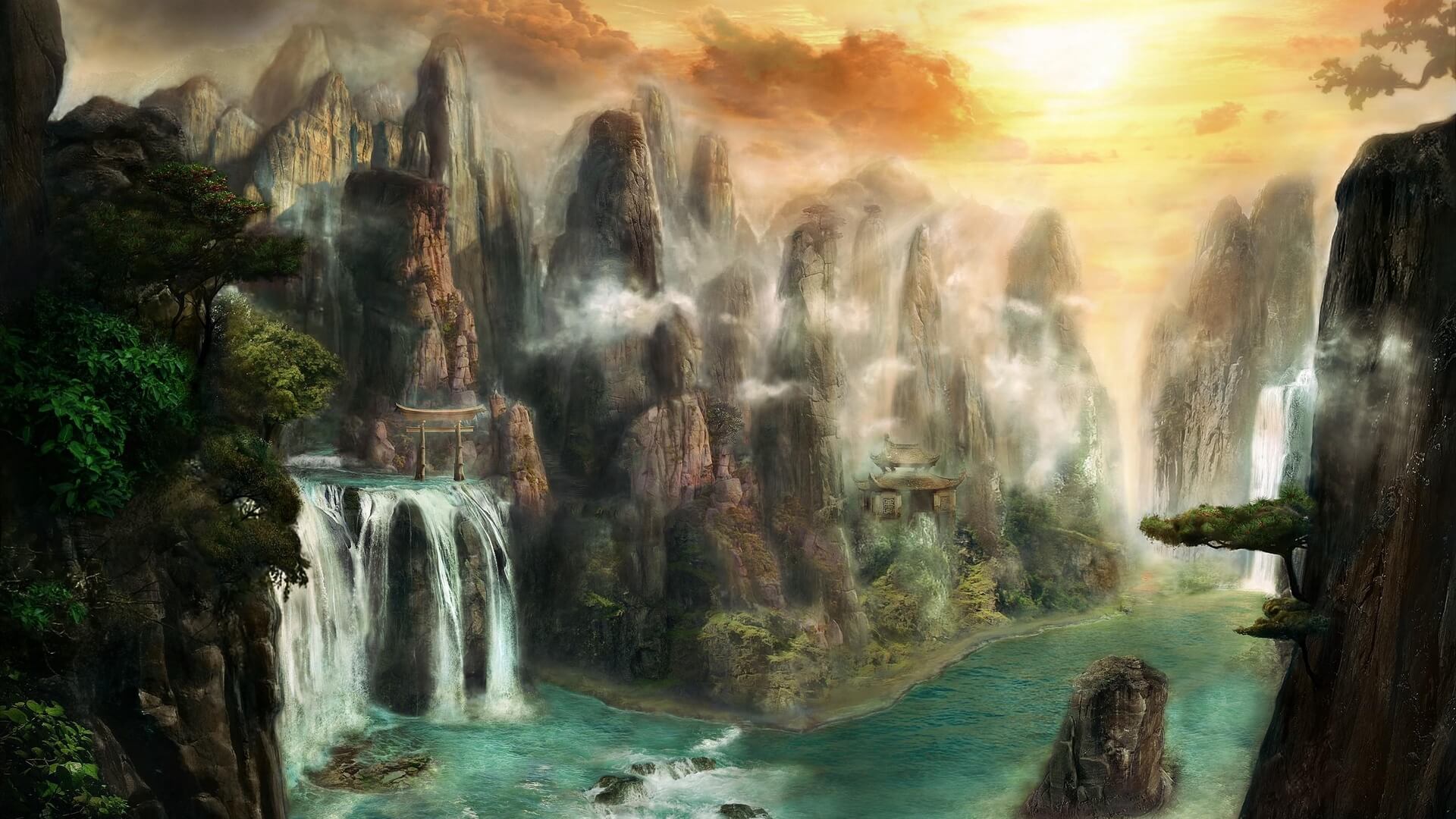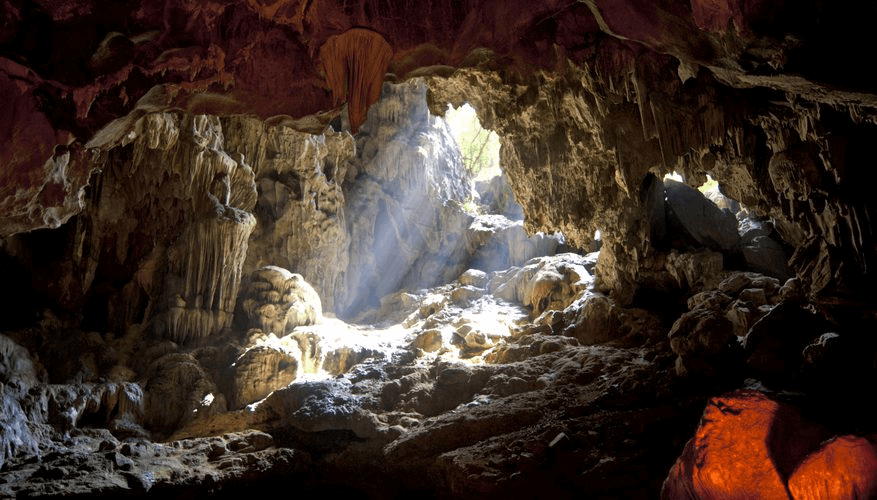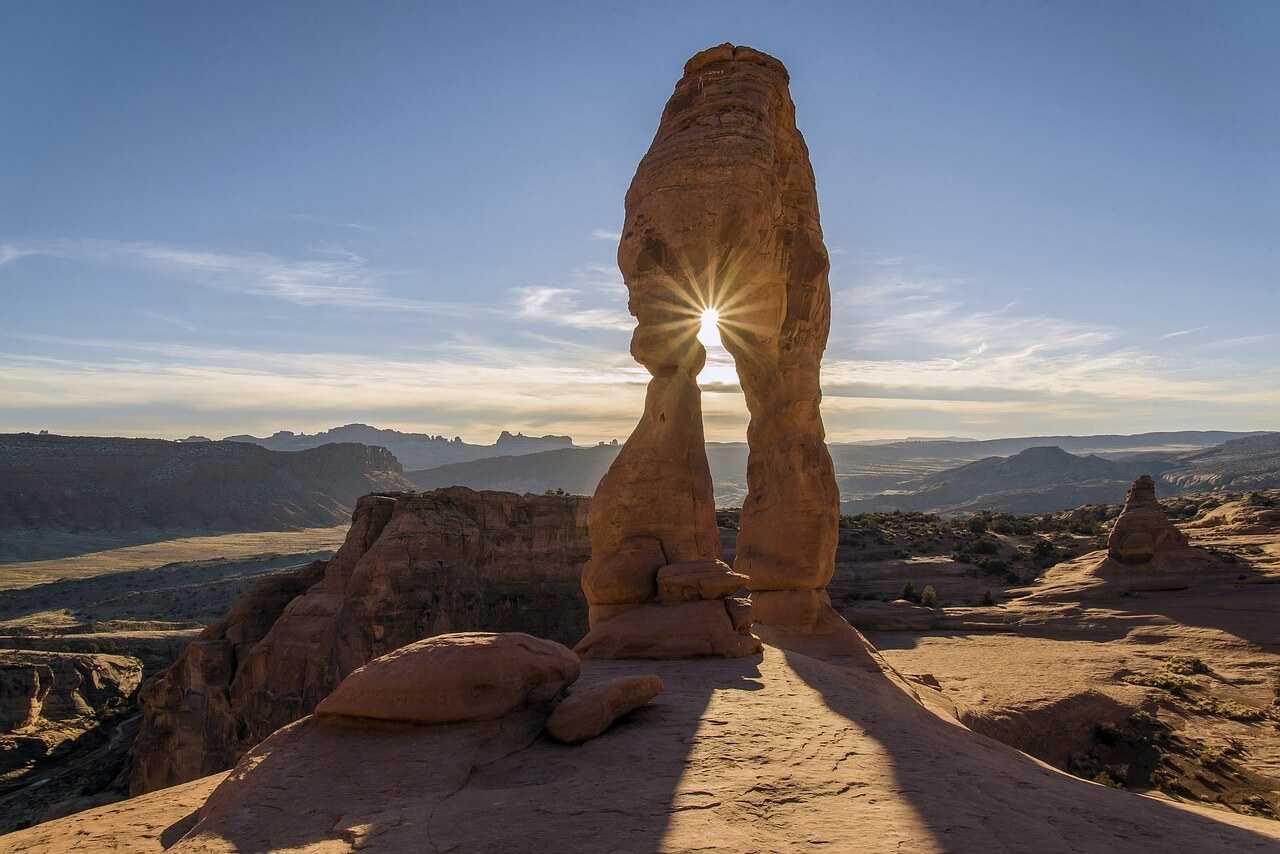
Ambience Worldbuilding Cheatsheet – 100+ Tips28 min read
Outcrops and auroras, eclipses and thunderstorms. Welcome back, Outlander, for the final section of a 3 Part cheatsheet overview of my larger 16 entry Mythic Ecology Series, a series on how learning real-world landscape features can enrich fantasy worldbuilding and storytelling for Dungeon Masters, Game Masters, and fiction writers. This post overviews adding mood and detail: rock formations, atmospheric and astronomic phenomena, and weather. Enjoy!
How do you use this stuff in practice? Check out the tools and tips in the “Worldbuilding” and “Mapping Tools & Guides” sections of my free D&D 5e resources compilation. These tips help flesh out details for Dice Drop Maps really well too, a popular method of rolling worlds.
Special thanks to my Patron Adam Roder for helping make this post possible.
PART 1: ROCK FORMATIONS WORLDBUILDING SUMMARY

NOTE: All terms covered in depth with visuals and narrative functions in my Rock Formations Worldbuilding post.
Rock Formations
1. “Rock Formation” refers to any isolated, scenic, or spectacular surface rock outcrop, sculpted from weathering or erosion.
Sedimentary Rock 101
1. Sedimentary Rock forms through gradual accumulation and compaction of sediments like sand or mud via water and wind action; exposed via erosion. Examples: sandstone, limestone, gypsum.
2. Includes porous and not very dense textures (clastic, bioclastic, and microclastic). Also includes textures with interlocking networks of visible crystals (crystalline and microcrystalline). Plus rocks containing abundant fossils.
Igneous Rock 101
1. Igneous Rock forms through cooling and crystallization of melt or magma. Includes plutons (subsurface magma crystallization) and volcanic extrusives (lava, pyroclastics, volcanic ash).
2. Textures include fine microscopic crystals (aphanitic), amorphous glass (glassy), rapidly expanded minerals (pegmatitic), large visible crystals (phaneritic), fine-grained matrices enclosing large crystals (porphyritic), and glassy fragments (pyroclastic).
Metamorphic Rock 101
1. Metamorphic Rock forms as one rock type transforms into another, via heat, pressure, or chemical change, with a new composition and fabric.
2. Textures include striped minerals with coarse foliation (gneissose), polygonal minerals with grain triple junctions (granoblastic), interlocking fine-grained minerals (hornfelsic), parallel minerals with foliation (schistose), and parallel minerals with microscopic grains (slaty).
Bedrock, Exposures, Outcrops
1. Within the surface of the planet’s crust, solidified rock (bedrock) lays under loose, softer material (regolith).
2. Visible exposures of bedrock can looking uncovered from subsurface material (rock exposures). These can look chiseled, and either protrusive, flat, or concave. Similarly, they can also manifest as rock outcrops, where erosion exceeds weathering. These can look rounded and protrusive.
Ore Deposits, Shears, Veins
1. Linear rock deformations from compressive stress (shears), as well as sheetlike bodies of crystallized minerals within rock (veins), can create openings for rock or sediment bearing valuable minerals or metals (ore deposits).
Mesostructures
1. Cooled igneous rock can form large intrusive masses (batholith), or conical structures following lava ejection (hornito).
2. Rock exposures can manifest as bare rocky elements of an otherwise icy ridge, mountain, or peak (nunatak and rognon), while rock outcrops can manifest or as large, freestanding hilltops standing stark above the surrounding smooth and gentle slopes of a summit or crest (tor).
Fins, Arches, Tunnels, Windows
1. Over time, water erosion and differential weathering can wear down edges of megastructures like buttes, mesas, and plateaus, producing facets like fins, which can wear down further, developing into arches or tunnels or windows, and later on potentially hoodoos or pillars of other sorts as well.
2. Fins have narrow, residual walls of hard sedimentary rock remaining after erosion. Arches, double arches, and sea arches appear as rock arches or bridges with openings underneath. Tunnel rocks have narrow tunnels running through their mass, and similarly, window rocks have masses where gaps function as crude windows.
Hoodoos
1. Rock pillars which protrude from the bottom of an arid drainage basin or badland manifest as hoodoos, including fairy chimneys arising from volcanic eruption material. Sometimes hoodoos aggregate into large clusters called hoodoo amphitheaters.
2. Differential wind erosion and weathering can create mushroom-shaped rock pillars, whereas visually-similar tea tables arise as sedimentary rock stacks, and ventifact pillars arise from abrasion, pitting, etching, grooving, or polishing. Related to ventifact, sandblasted hollows can contribute to streamlined, wind-formed ridges exposed down to bedrock (yardang).
Bonus Pillars, Spires, Towers
1. Rock pillars, natural structures of upright stone, typically detached, can manifest in many additional forms, including close together or partially-connected rock pillar clusters, and the wide horizontal arrays of rock pillar fields.
2. Rock pillars can also appear as spires, which taper toward the top, which can also form clusters and fields.
3. Rock pillars can also appear as very tall stone towers, which can also form clusters and fields, as well as tall, isolated rock masses appearing as near-vertical joints and fractures erode downward (stone tower karst). Stone colonnades refer to groups of vertical, weight-bearing rock columns attached to an overheard surface.
Balanced Rocks
1. Large rocks or boulders, sometimes of substantial size, resting on other rocks, bedrock, or glacial till, can manifest as balancing rocks, including boulder bridges from rockfall. This also includes balancing erratics moved by glacial action.
2. Some rock formations persist after extensive wind, water, or chemical erosion (erosional remnants). This can appear as flat discs atop rock pillars (hat rocks), as glacially-moved boulders contrasting in size and type from the area they rest in (glacial erratic), or as large, detached rock fragments transported to a hill or slope resting place.
Boulders & Domes
1. Domes can arise as steep, bald outcroppings (bornhardts), as projections from subterranean intrusions (cupola), or as one-sided granite formations (half-dome).
2. Gradually, freeze-thaw action can crack open boulders (cleft and hollow boulders), and water erosion can leave sphere boulders along coastlines.
Rock Slopes
1. Rock formations functioning as slopes manifest in many varieties; intensive processes can create isolated pillow or ball protrusions after massive shocks to unconsolidated sediment, or v-shaped folds arising from compressive stress (chevron folds), or interlocking polygonal prisms of basalt arising from volcanic eruption.
2. In contrast, more subtle preferential weathering over time can create concave rock walls (flared slopes), and gradual wind and rain can create colorful rainbow sandstone slopes. Also, as an aboveground counterpart to speleothems, hot springs can slowly create mineral terraces.
Rock Expanses
1. Softer flatland rock formations can manifest as dried mudcracks, or raindrop impressions in soft sediment.
2. Harder flatland rock formations can arise as glacial retreat carves bald topographies of exposed slabs and fissures (limestone pavement), as coastal wave erosion creates narrow patterned platforms, or as various processes generate fractured rectangular mosaics (tesselated pavement).
Rock Intrusions
1. Igneous rock intrusions can manifest as relatively thin and elliptical downward cone sheets, as circular ring dikes with steep contacts from collapsed calderas, and as erosional remnant masses of country rock projecting downward (roof pendants).
2. Dikes more broadly arise as vertical rock sheets formed in a fracture, with sedimentary origin. Related tabular sheet intrusions called sill intrude between preexisting layers of various rock.
Look-Alikes
1. Rock formations can resemble real-world biological elements, like humanoid creatures and other animals, as well as plants.
2. Rock formations can also resemble real-world manufactured elements, like cobblestones, lighthouses, organ pipes, or stairways.
PART 2: ATMOSPHERIC OPTICAL PHENOMENA WOLRDBUILDING SUMMARY

Auroras
1. When solar wind disturbs the magnetosphere in high-latitudes, skyborne light displays of varying color and complexity can appear (aurora). A localized form form can also arise, faint and elongated (picket fence aurora).
Coronae
1. Coronae form from diffraction in comparatively large ice crystals. Diffracted sunlight and moonlight can create concentric, pastel-colored rings with a bright central aureole. This can also take place filtered through airborne pollen, causing a vertical elongation.
Ghost Lights
1. Atmospheric ghost lights refer to various unexplained light phenomena. This can include flickering lines or fires (kitsunebi), glowing discharges (St. Elmo’s Fire), fuzzy, hovering, disc-shaped lights (min min light)s, and various luminescent or flaming balls: orbs (onibi), globes (shiranui), fireballs (tenka), and lanterns (will-o’-wisp).
Glories
1. Sunlight or moonlight refraction in water droplets can also cause concentric, successively dimmer rings around the shadow of an observer’s head. Similarly, glories can arise as brocken spectre, magnified and enormous-appearing shadows of an observer’s body projected upon clouds opposite the Sun, with a glory of colored light. Finally, dew can act as comparable lenses, enabling bright outlines around an observer’s shadow.
Glows
1. Atmospheric glows can appear in many forms, including distortions like the short period in morning or evening twilight where sunlight takes a more blue shade (blue hour) and the short period of daytime after sunrise or before sunset where sunlight takes a more red shade (golden hour).
2. This can also manifest as sunset afterglows, and pinkish bands in the sky during civil twilight (belt of venus), as well as false sunrises or false sunsets, which near mountains and clouds can appear as alpenglow long after sunset or long before sunrise.
3. Various dry particulates can obscure the daytime sky (haze), whereas faint emissions of light by the planetary atmosphere (airglow) ensure the night sky never completely darkens.
Ice Crystal Halos (Frequent)
1. Sunlight interacting with ice crystals that act as prisms and mirrors suspended in the atmosphere can create halos in the sky, ranging from colored or white rings, to arcs and spots, sometimes near Sun or Moon, and potentially circumscribed by further ovals of light (circumscribed halo).
2. Halos can appear as bright spots: a glowing spot below the sun when seen from above (subsun), or bright spots appearing on an arc of light aside Sun or Moon (sun dog, moon dog).
3. Halos can appear as lines: vertical beams of light (light pillars), horizontal white lines sometimes featuring parhelia (parhelic circle), or even as a horizontal rainbow band below the Sun or Moon and parallel to the horizon (circumhorizontal arc)
4. Halos can appear as arcs: an upper or lower arc tangent to a halo (tangent arc), or even a rainbow arc above the Sun (circumzenithal arc).
Ice Crystal Halos (Infrequent)
1. Halos can appear in even rarer forms, such as bright spots on parhelic circle (120* parhelion) or a faint white spot or x-shape opposite the Sun on top of parhelic circle (anthelion), or a halo below the horizon (subparhelic circle).
2. They can also appear as rare circles or rings: a complete faint circle (kern arc), or a ring around the Sun (46* halo).
3. They can also appear as rare diffuse disks: a halo around the sun after volcanic eruption (bishop’s ring), or a solar or lunar elliptical halo.
4. Many rarer halos appear as arcs, such as an upside-down rainbow arc (infralateral arc), or a luminous arc extending inward from a sun dog (lowitz arc), or a complex halo with upper and lower tangent arcs (parry arc), or a halo curving upward from the horizon and touching an arc above the point directly opposite the Sun from the observer (subhelic arc), or a rainbow-colored band in a wide arc above the Sun and seemingly encircling it (supralateral arc).
Iridescent Clouds
1. Instead of halos, smaller ice crystals create iridescence, a colorful optical phenomenon, pastel or vivid, in a cloud in general proximity to the Sun or Moon. This can appear as a brightening thunderhead crown followed by an aurora-like emanation (crown flash), as iridescent mountain clouds, as an upper atmosphere phenomena during astronomical twilight (noctilucent clouds), or as a winter polar stratospheric phenomena during civil twilight (polar stratospheric clouds).
Mirages
1. Atmospheric optical illusions come in several forms. Just after sunset or right before sunrise, green flashes can manifest as very brief green spots above the upper rim of the Sun’s disk.
2. Atmospheric temperature gradients can refract light to the point of an inferior mirage, a vibrating, towering, or stooping illusion under the real object, typically appearing as blue sky upside-down on the ground in an unstable projection like water. By contrast, superior mirages appear above the true object, mostly in polar regions, and have more stability.
3. The most complex mirages arise as fata morgana, a narrow band right above the horizon which drastically distorts a base object, sometimes rapidly, into stacks of inverted and upright images, with alternating compressed and stretched zones.
Rainbows
1. Reflection, refraction, and dispersion of light in water droplets can result in multicolored circular arcs in the sky: rainbows. These can sometimes have second concentric arcs (double rainbow), or diverge as twinned rainbows as the base splits, sometimes even forming triple rainbows with tertiary arcs. Similarly, on water surfaces, two complementary mirror bows can appear above and below the horizon, and rarely even more complex reflected rainbows formations can arise too. One or several faint and narrow bands can border a rainbow’s edge, creating concentric arcs of subdued pastel hues (supernumerary rainbows).
2. Rainbow-like phenomena can also occur in dew (dewbow), in fog (fogbow), or through moonlight rather than direct sunlight (moonbow).
3. Rainbows can have more or less completion. During sunrise or sunset, deep-red monochrome rainbows can form. And at elevation, observers can sometimes witness full-circle rainbows.
Rays & Shadows
1. Rays of sunlight can appear to radiate through clouds as beams of light (crepuscular rays), sometimes opposite the Sun in the sky (anticrepuscular rays).
2. Atmospheric shadows can take many forms. The opposite of a crepuscular ray, a cloud shadow, appears when a cloud casts its shadow across the sky. Conversely, planets can also cast their own shadow onto their atmosphere, appearing as a dark and diffuse band low above the horizon during twilight.
3. Via perspective effects, downward mountain shadows appear where an observer at a summit perceives an apparent triangular shadow projected on the sky, and upward mountain shadows appear projected upward onto a lower level translucent cloud or mist. Finally, mountain shadows can appear as 2D ridge shadow effects on an opposite valley wall combined with 3D shadows cast onto the air itself by the pinnacle (corrugated mountain shadow).
Reflections
1. Various waterborne reflections can take place, including white light on the underside of clouds, near icefields, seen near the horizon (iceblink), or dark spots appearing beneath low-lying clouds over the sea in polar latitudes (water sky).
2. Moonlight and sunlight can also create bright reflections on water (moonglade, sun glitter).
Shines
1. Faint shines in the night can appear around the antisolar point (countershine), or as a triangular glow extending from the Sun’s direction along the zodiac (zodiacal light).
NOTE: All terms covered in depth with visuals and narrative functions in my Atmospheric Optical Phenomena Worldbuilding post.
PART 3: ASTRONOMY WORLDBUILDING SUMMARY
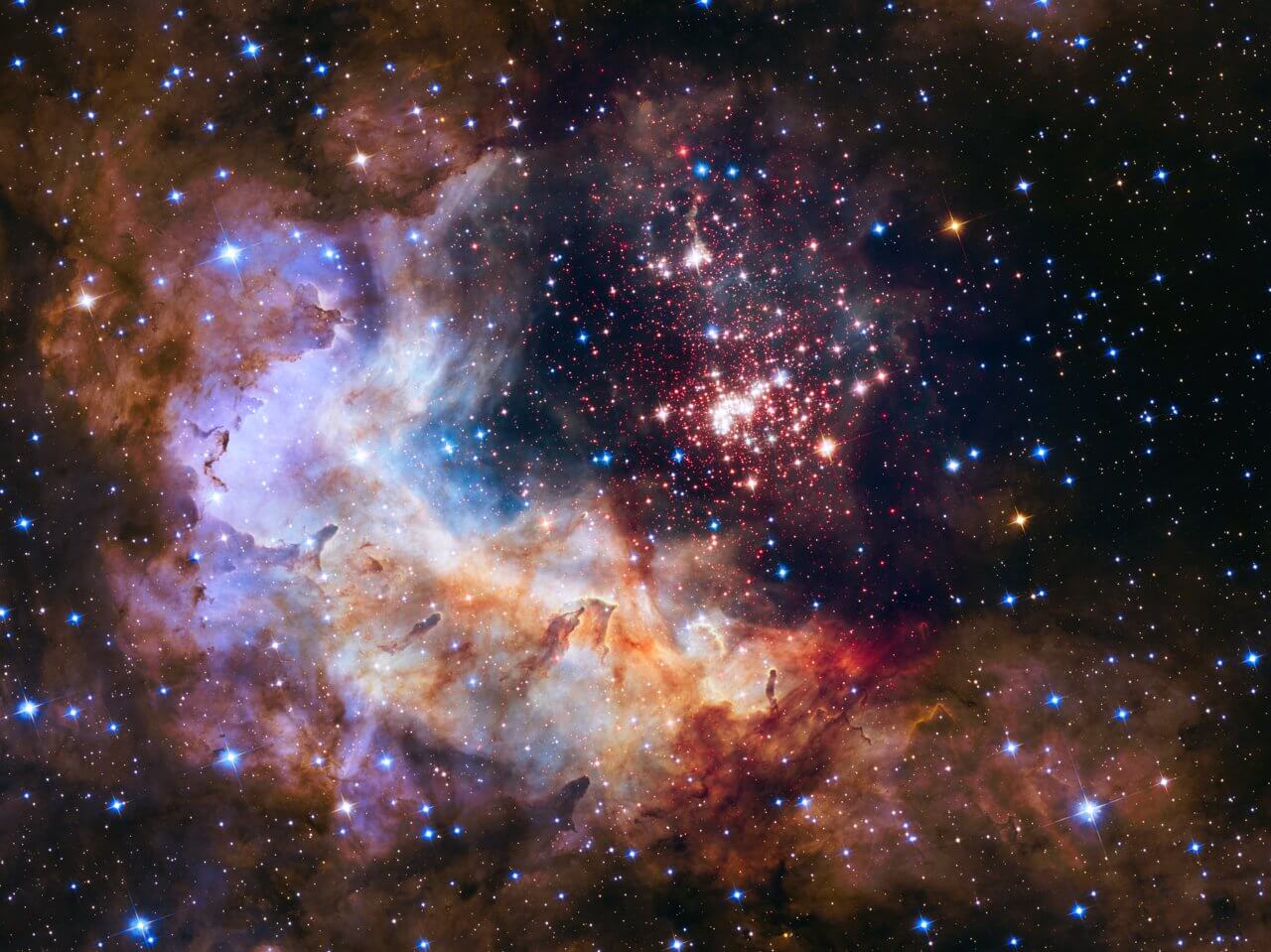
Solar Phenomena
1. A Sun refers to a star at the center of a solar system, creating durable gravitational orbits. Its solar phases progress through dawn, sunrise, noon, sunset, dusk, and midnight. On a longer duration, an analemma diagram represents the Sun’s position across a year.
2. A Sun can emit a temporary, planet-sized regions of gas manifesting as a dark blemish, or sometimes a sudden flash of brightness (solar flare).
Lunar Phenomena
1. A Moon refers to a natural satellite of a planet, visible at night while reflecting light from the planet’s star. Its lunar cycle progresses through 8 phases from a filling crescent toward full and back toward an emptying crescent.
2. To a stationary observer, a Moon has an appearance phase over its planet’s horizon (moonrise) and a disappearance phase behind its planet’s horizon (moonset). When a Moon coming closest to its planet in its elliptical orbit coincides with a full moon or new moon, a larger-than-usual, supermoon occurs, Conversely, a micromoon can also occur under opposite conditions.
3. In a month or season, an additional full moon (blue moon) or additional new moon (black moon) can take place; colloquially, these can also refer to temporary moon hues too, comparable to when an eclipsed moon has a reddish coloration (blood moon).
4. Other lunar visual phenomena include coincidental patterns of familiar images on the visible face of a moon (lunar pareidolia), and a moon illusion where the Moon appears larger near the horizon than higher in the sky.
5. Some final lunar visual phenomena include when a planet reflects sunlight that dimly illuminates the dark side of a moon (planetshine), a broken arc of illuminated lunar mountain peaks (saber’s beads), and a phenomenon where a crescent moon’s “horns” point up at an angle away from the horizon (wet moon).
Planetary Phenomena
1. A planet refers to an astronomical body orbiting a star or stellar remnant, rounded by its own gravity, which has cleared its surrounding area of cosmic dust masses. Bright planets appear visible to the naked eye in the night sky.
2. Rumors may theorize about secret planets, potentially bearing life. Sometimes this includes notions of a supposed eventual disastrous collision between one’s planet and a large planetary object, like a secret planet (nibiru cataclysm).
Stellar Phenomena
1. A Star refers to a massive luminous plasma spheroid bonded by its own gravity. Stars can lie close to one another, including orbiting each other (double star), or merely appear so to an observer (optical doubles).
2. A star can suddenly brighten immensely because of a catastrophic explosion (supernova, hypernova). When a black hole pulls apart a star, it can release a tidal disruption flare, and visual alignments from this can result in light deforming into a ring (Einstein ring). The aftermath of nova can also create nebula, bright but fuzzy patches of the night sky.
3. Exploding stars can create powerful cosmic winds, potentially preventing new stars from forming. By contrast, weaker cosmic dust falls on planets.
Constellations
1. Popularly-known patterns of visible stars in the night sky can have unofficial designations (asterism), or official ones (constellations). Galactic shadows can form the less well-known dark cloud constellations.
Small Solar System Bodies
1. Small solar system bodies include small rocky bodies orbiting stars (asteroids) and their clusters (asteroid belts), celestial objects consisting of a nucleus of ice and dust potentially with a tail of gas and dust (comets and great comets).
2. Small bodies of matter which enter a planet’s atmosphere and become incandescent (meteor, meteorite) may appear as a streak of light and shed material, sometimes clustering into meteor showers. Meteoroids refer to small ones, meteorites make landfall, and earth-grazing fireballs enter the atmosphere but leave again. Bolides and superbolides refer to extremely bright meteors.
Eclipses
1. Eclipses form as a body partially or totally disappears, either covered by another object or by passing into another’s shadow. A linear configuration of three celestial bodies forms a syzygy.
2. Lunar eclipses progress as a Full Moon moves through a planet’s shadow. Possible phases include penumbral, partial, and total shadow cover. Four lunar eclipses within two consecutive years form a “tetrad”.
3. Solar eclipses progress as a moon obscures its star, from the perspective of that moon’s planet. Possible phases include partial, including sometimes annular (where due to distance, a red ring remains), and total eclipse. Annular and total can display Baily’s beads, where beads of sunlight appear aside the moon.
Occultations & Transits
1. Occultations manifest when an apparently larger body passes in front of an apparently smaller one. Conversely, transits manifest when an apparently smaller body passes in front of an apparently larger one.
Conjunctions & Oppositions
1. Conjunctions occur when two astronomical bodies have the same right ascension or ecliptic longitude, as viewed from an observer’s planet. Similarly, appulse denotes the shortest apparent distance between one celestial object and another, as seen from a third body, but due to perspective rather than space.
2. Oppositions occur when two astronomical objects exist on opposite sides of the celestial sphere, as observed from a given body. Similarly, quadrature occurs when the position of a planet or moon rests 90* or 270* from its sun.
Solstices & Equinoxes
1. Equinoxes take place when sunrise occurs at the midpoint between the two extremes on the horizon where it can happen, and the center of the visible sun rests directly above a planet’s equator in the Spring or Fall season, creating an even duration of daytime and nighttime occurs across the planet, illuminating both poles.
2. Solstices take place when one of a planet’s poles has its maximum tilt toward its sun, where that sun reaches its lowest maximum or highest maximum position in the sky, granting the longest or shortest annual period of daylight. Localized for each hemisphere, and causes a period of continuous light or continuous dark at the pole.
Space Holes
1. A black hole (and supermassive black hole) refers to a concentration of mass so compact that no light or matter can escape, whereas a white hole refers to a hypothetical region of space-time where the outside cannot enter, but matter and light can escape from.
2. A “wormhole” refers to another hypothetical structure, a tunnel connected points separated in space and time.
NOTE: All terms covered in depth with visuals and narrative functions in my Astronomy Worldbuilding post.
PART 4: WEATHER WORLDBUILDING SUMMARY
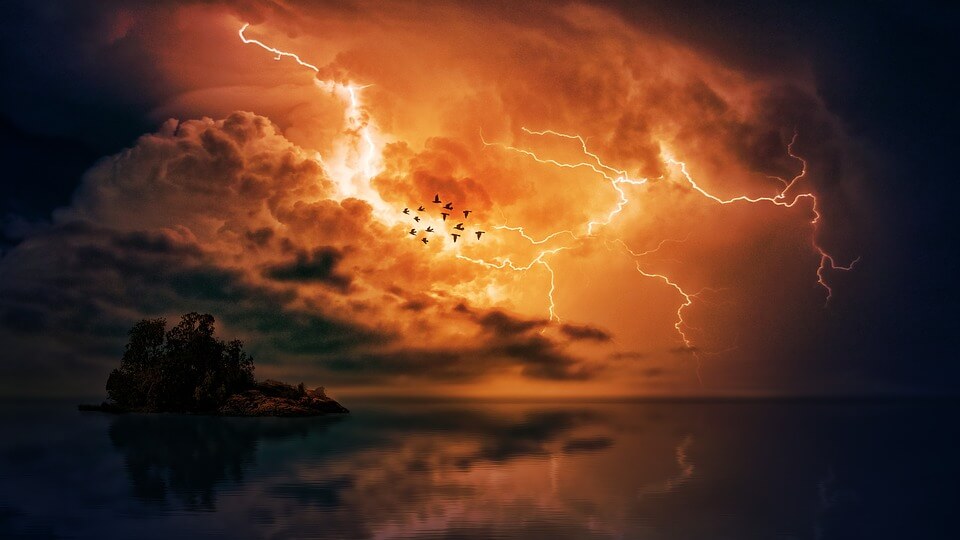
Primary Clouds
1. The highest primary cloud categories, by decreasing altitude, include tenuous cloud-like phenomena (noctilucent clouds), and iridescent clouds (polar stratospheric).
2. High elevation primary cloud categories include clouds appearing as hooks, feathers, bands, or patches (cirrus), plus thin, pure white fields of small grains or ripples (cirrocumulus), and finally transparent milky or fibrous veils with shadows and halos (cirrostratus clouds).
3. Middle elevation primary cloud categories include white or grey patches shaped like turrets, lenses, balls, or sheets or layers with undulations or rolls (altocumulus), as well as smooth, extensive layers casting no shadow (altostratus), and dark rain clouds or bright snow clouds (nimbostratus), plus huge cloud towers sometimes with anvil (cumulonimbus), and lastly isolated, puffy clouds with sharp outlines (cumulus).
4. Low elevation primary cloud categories include horizontal layers with uniform bases (stratus), and also large, dark, rounded cloud masses in groups, lines, or waves (stratocumulus).
Secondary Clouds
1. Secondary cloud categories come in many diverse forms. Low elevation ones include low, horizontal clouds along the edges of thunderstorms (arcus), and undulating atmospheric waves creating dark and dramatic cloud cover (asperitas).
2. Some more unique clouds forms include large gaps in the sky, circular or elliptical (fallstreak holes), and ones associated with special weather: dark and rotating funnel clouds, which can become tornados, as well as dense pyrocumulus clouds, from volcanic eruptions.
3. Special clouds associated with turbulence include stationary, lens-shaped clouds, singular or stacked, where mountains obstruct airflow and create turbulence (lenticular clouds), plus protruding or elongated tubes hanging from clouds formed from turbulence (mammatus).
Wind & Dust
1. Wind and dust weather phenomena come in many varieties. Simple wind phenomena include strong sustained winds (gale), from which can follow sudden, sharp increases in wind speed (squall).
2. More complex wind phenomena include vertical rotating columns of air (whirlwind), and storms marked by high wind with little or no precipitation (wind storms), which can also manifest as widespread, long-lived, straight-line wind storms (derecho), and also violently destructive whirlwind storms with dark funnel clouds (tornadoes). Seasonally-reversing wind and rains can appear as monsoons.
3. Dust phenomena include small, localized updrafts (dust devils), more powerful dust storms with strong winds launching and spreading dust (similar mechanics creating sandstorms), and the super powerful haboob, which blast sand into high elevation and can cover massive areas.
4. Thunderstorms can collapse, with their rain and hail core plummeting to the ground destructively (microburst). Where they instead solidify and intensify at scale, large, rotating storms with low-pressure centers can manifest (cyclones), which can become colossal (hurricane), and theoretically catastrophically powerful (hypercane), such as from asteroid impacts or subsea volcanic eruptions. Terrestrial volcanic eruptions can propel volcanic ash into the atmosphere.
Dryness, Heat, Fire
1. Periods of excessive regional heat (heat wave) can cause or worsen prolonged shortages of regional water supply (drought).
2. Under such conditions, uncontrolled fires in wilderness or rural areas can occur (wildfires), the worst of which can become self-fuelling firestorms, or create spinning towers of intense flames (fire whirls).
Cold & Vapor
1. Unexpected freezes and frosts often accompany periods of excessively cold regional weather (cold waves).
2. Masses of low-lying clouds obscuring vision (fog), denser and longer-lasting than mist, can combine with cold to create freezing fog, which deposits rime ice. By contrast, columns of warm, rising vapors can appear over the sea (sea smoke).
Precipitation
1. Precipitation can take many forms, from rainstorms and sleet storms, to ice storms and hail storms and snowstorms. Very severe forms can arise as blizzards, with strong sustained winds over prolonged periods.
Lightning & Thunderstorms
1. Storms can produce lightning or thunder, often accompanied by strong wind or heavy rain (thunderstorms), sometimes with snow instead of rain (thundersnow). Massive thunderstorms with strong, persistent updrafts become supercells.
2. Lightning phenomena have many variations, mainly including cloud-to-cloud lightning, cloud-to-ground lightning, and the rarer ground-to-cloud lightning.
3. More exotic lightning phenomena include the spherical ball lightning, volcanic lightning appearing inside clouds of volcanic ash, and an extremely rare landscape intersection phenomenon creating near-constant regional electric discharges (Catatumbo lightning).
Transient Luminous Events
1. Several variants of transient luminous events associated with thunderstorms exist in the upper atmosphere. This includes disc-shaped regions of short-lived luminosity (blue starters, bluejets), and its more compact-shaped version above a convective dome (gnome). Red tendrils resembling bluejets (TROLL) can also take place.
2. Luminous red-orange electrical discharges high above thunderstorms (sprites), sometimes with preceding disk-shaped halos, can also create red carrot-shaped gigantic jets shooting upward from a thunderstorm’s core.
Slides & Floods
1. Some outflows include overflows of water (floods) and outpours of molten rock (lava flows).
2. Outflows can also manifest as slides, particularly mass wasting ground movements (landslides, rockfalls, mudslides), and when a cohesive slab of snow on a weaker layer fractures and slides rapidly (avalanche, snowslide).
NOTE: All terms covered in depth with visuals and narrative functions in my Weather Worldbuilding post.
FINAL THOUGHTS
This concludes the summary series, but I have some greater ambitions for developing Mythic Ecology into worldbuilding web tools. Give this a share if you liked it, and let me know in the comments if you have any feedback. I publish new posts on alternating Tuesdays. In the meantime, I post D&D memes and writing updates over on my site’s Facebook Page. Also, if you want to keep up-to-date on all my posts, check out my Newsletter Sign-Up to receive email notifications when I release new posts. A big thanks as always to my Patrons on Patreon, helping keep this project going: Adam, Alexander, Benjamin, Chris, Eric & Jones, Evan, Geoff, Jason, KRR, Rudy, and Tom. Thanks for your support!


